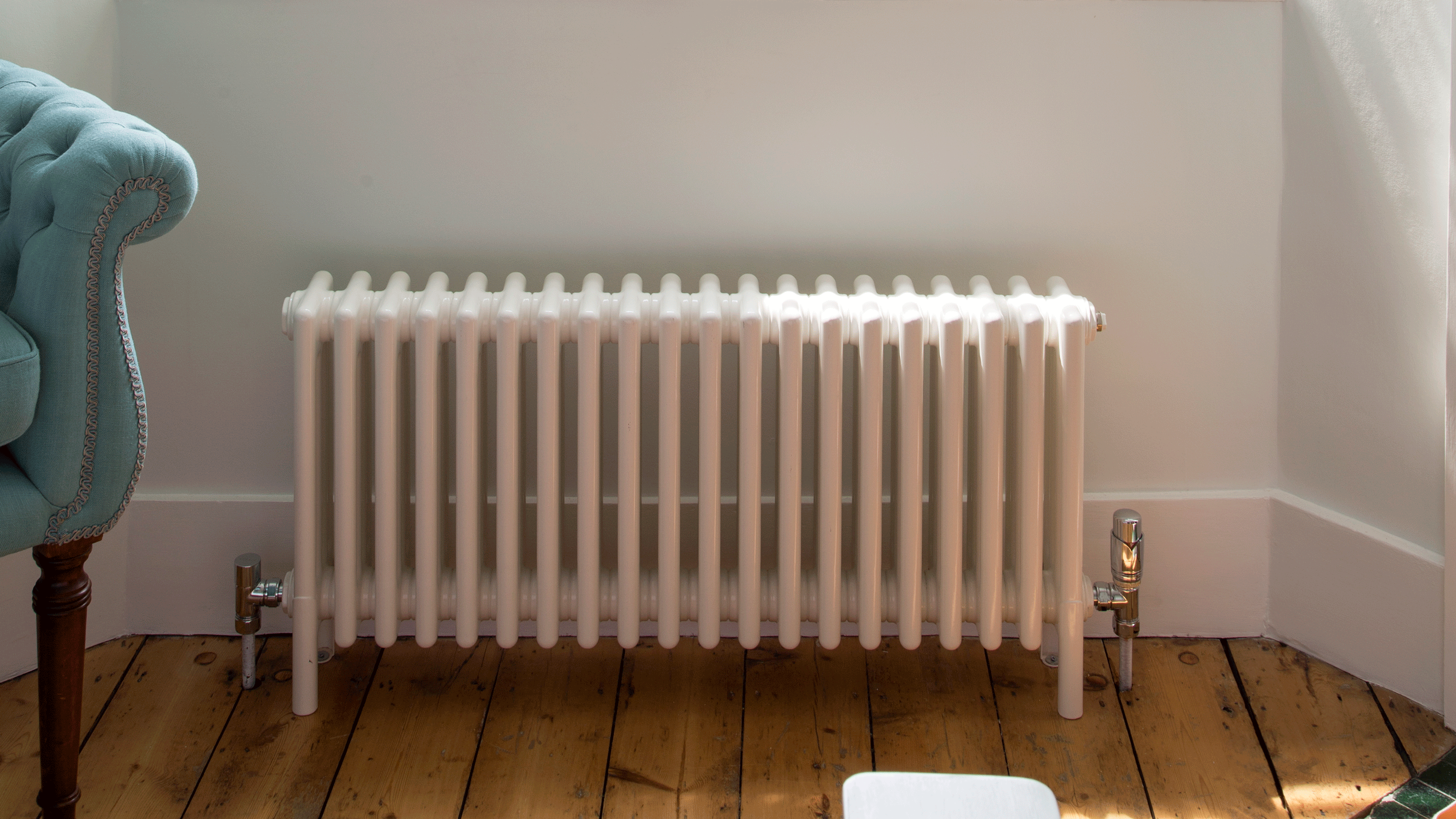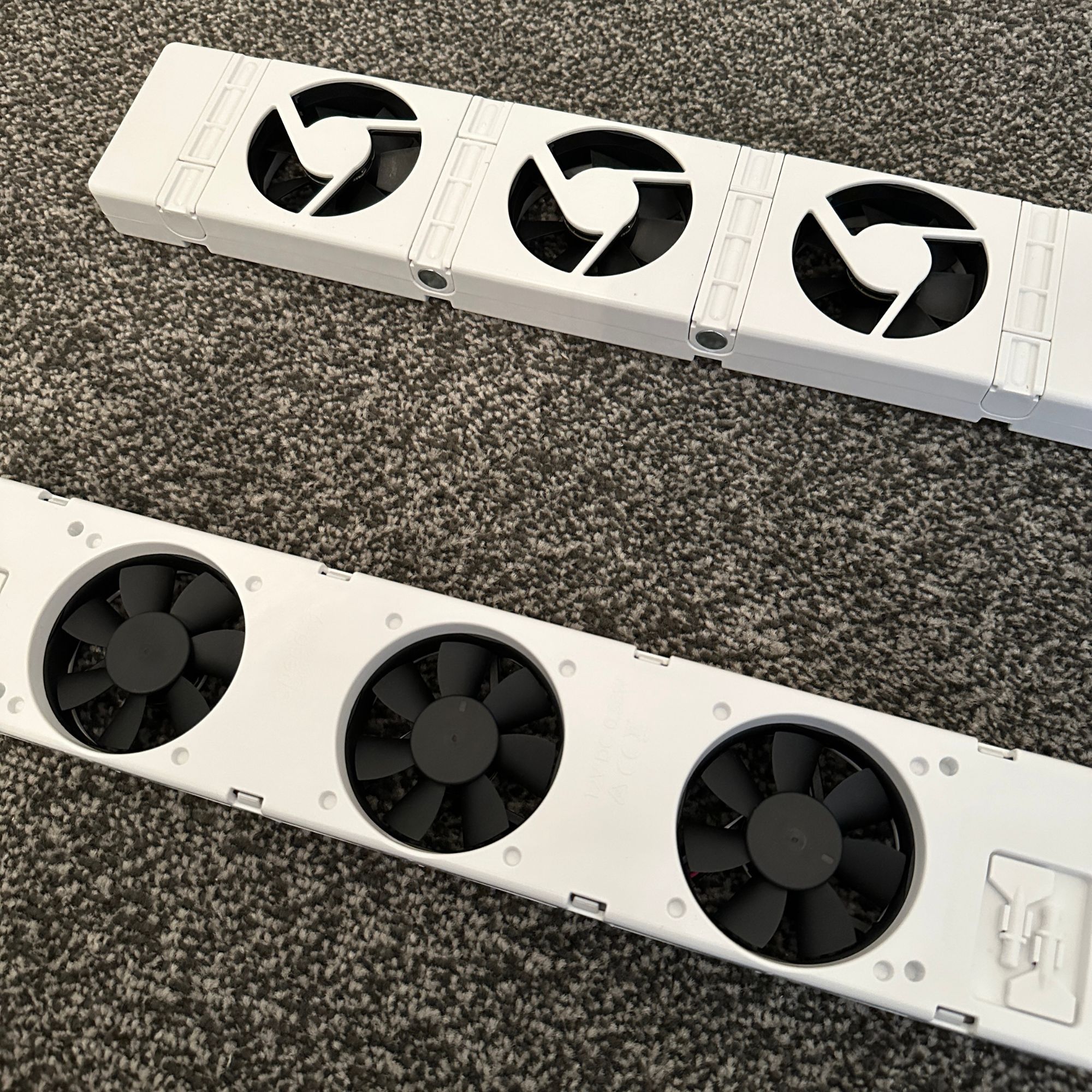I tried a radiator fan to see if it really speeds up heating times and saves energy – now I'll never turn on my heating without one
The best part? It's a budget-friendly quick fix


Like many of us right now, I've been keeping a close eye on my energy bills, especially as heating costs continue to climb. If there's something out there that promises to make radiators more efficient, is easy and fuss-free to use, best believe it'll pique my interest. So, when I came across the SpeedComfort radiator fan for keeping my house warm in winter for less, I was all ears at its fascinating possibilities.
While I used to be quite anti-radiator as I was convinced they were the factor driving up my bills, I've recently discovered that keeping my heating steadily on a manageable temperature was actually turning out to be a lot cheaper than all the portable heaters I swore were saving me money. Of course, I do still turn to my best electric heater when I need a super quick blast of warmth, but I never keep it on for more than necessary.
I've been trying my best to get clued up on all the ways to get the most out of it for the least possible costs; such as learning how to bleed a radiator, for example. However, the concept of a radiator fan was completely new to me. In short, it's a compact fan designed to attach to the bottom of your radiator, boosting its efficiency by circulating heat more evenly around the room. But, does it work? After trying it for a few weeks, I can confidently say it does – and I'm genuinely impressed.
The SpeedComfort Monoset is currently available for less than £40 in Robert Dyas' huge Black Friday sale. If you're interested in trying it out for yourself, now is the time to snag a good deal on this starter set.
As far as first impressions for the SpeedComfort radiator fan went, I was pretty surprised at just how simple it was to get started. It's a small and compact fan that attaches to the base of your radiator with built-in magnets. For those with less conventional radiators, such as narrow or single plate types, the fan comes with adjustable extensions and clear instructions for customisation.
Luckily, the radiator I tried it on in my home office was standard sized so installing it was super easy, as it just clicked into place. It's secure too, so you don't need to worry about it coming loose or falling off once it's on; but it's also easy to remove if you use some pressure when pulling it off.
Once it's on, just connect the temperature sensor cable and plug it into a wall socket. These temperature sensors make it so the fan will automatically kick in when your radiator reaches a certain temperature, helping the SpeedComfort do its magic without you so much as having to think about it.
I loved how little effort it took to understand and execute the set up. It took me less than five minutes to get sorted. Everything is signposted and you just have to follow their steps accordingly. It's often easy to dismiss small gadgets like these as gimmicky in nature, but this one immediately felt purposeful.
Get the Ideal Home Newsletter
Sign up to our newsletter for style and decor inspiration, house makeovers, project advice and more.

I tested two of the SpeedComfort radiator fans in my home office. Here's a closer look at the front and back side.
Does it actually work?
The difference was immediately noticeable. Normally, I'd set my thermostat to around 20°C to actually feel comfortable, but with the SpeedComfort radiator fan, I managed to bring it down to 18°C. While it may seem inconsequential, you'd be surprised how much you can save by turning the heating down by even just one degree. Now, I was finally able to reap those benefits myself without feeling like I was compromising comfort.
My home office felt just as warm, and the fan worked quietly to help the heat spread evenly. SpeedComfort claim it makes less than 20dB of noise, which for me was almost unnoticeable. It's quieter than my air purifier, which I equally don't mind whirring along in the background while I work.
Another thing I noticed was how much quicker the room warmed up because of the radiator fans. Instead of waiting for my radiator to heat my room in what feels like a gruelling amount of time (this is why I end up going back to my little electric heater, despite its fluctuating cost to run), the fan heated up the room in what felt like half the time. This made it perfect for those chilly mornings when I'm logging on and waiting for my office to defrost.

After using the radiator fan for three weeks now, not only have I been able to lower my thermostat by 2°C as it distributes heat more evenly, resulting in savings on my heating bills, but the time it takes to heat a room is also significantly shorter, meaning I don't need to keep the heating on for super long periods of time.
While it may not seem like much, these small things add up to a lot over time, especially during the winter months in the UK. With the current deals available to get a SpeedComfort starter set for £40, I'd say it basically pays for itself in efficiency and comfort in the long run, making it a worthwhile investment for cost-conscious households. Of course, if you want the whole system in your home, you'd have to invest in multiple, but seeing as my home office was my biggest problem area, the two I've tried have served their purpose.
If you're looking for a way to keep your home warm and your energy bills low, I'd definitely recommend considering a radiator fan. It does what it says on the tin and more, and I'm surprised how underrated these are in the current market. They're easy to set up, virtually maintenance-free, and deliver noticeable results pretty fast. After using one, I don't see myself turning back for the foreseeable future. They've now become a must for staying cosy in my home.

Jullia was Ideal Home’s Junior Writer from 2022-2024 and the Ideal Home Certified Expert in Training on Vacuums having spent over 60 hours testing different models. She’s always loved all things homes and interiors, graduating with a bachelor’s degree in Architectural Studies from the University of Nottingham where her love for writing blossomed following her internship at ArchDaily. Now focused on home tech and cleaning, Jullia works on writing features and explainers to help people make the most of their home appliance investments, putting the newest launches through their paces. When she isn’t writing, she loves exploring the city, coffee shop hopping, and losing hours to a cosy game or book.
-
 A top-to-bottom renovation has turned this Edwardian house into a lovely family home
A top-to-bottom renovation has turned this Edwardian house into a lovely family homeWith a few considered structural changes, this period house has been turned into a family home and has created a sanctuary for years to come
By Maxine Brady
-
 How to heat a conservatory
How to heat a conservatory7 practical options to consider for year-round comfort
By Amy Reeves
-
 Blueberry is the ‘it’ blue this spring - but these are the 3 colours you should never pair with it, according to experts
Blueberry is the ‘it’ blue this spring - but these are the 3 colours you should never pair with it, according to expertsAvoid overpowering your space by avoiding these three bold colours
By Kezia Reynolds
